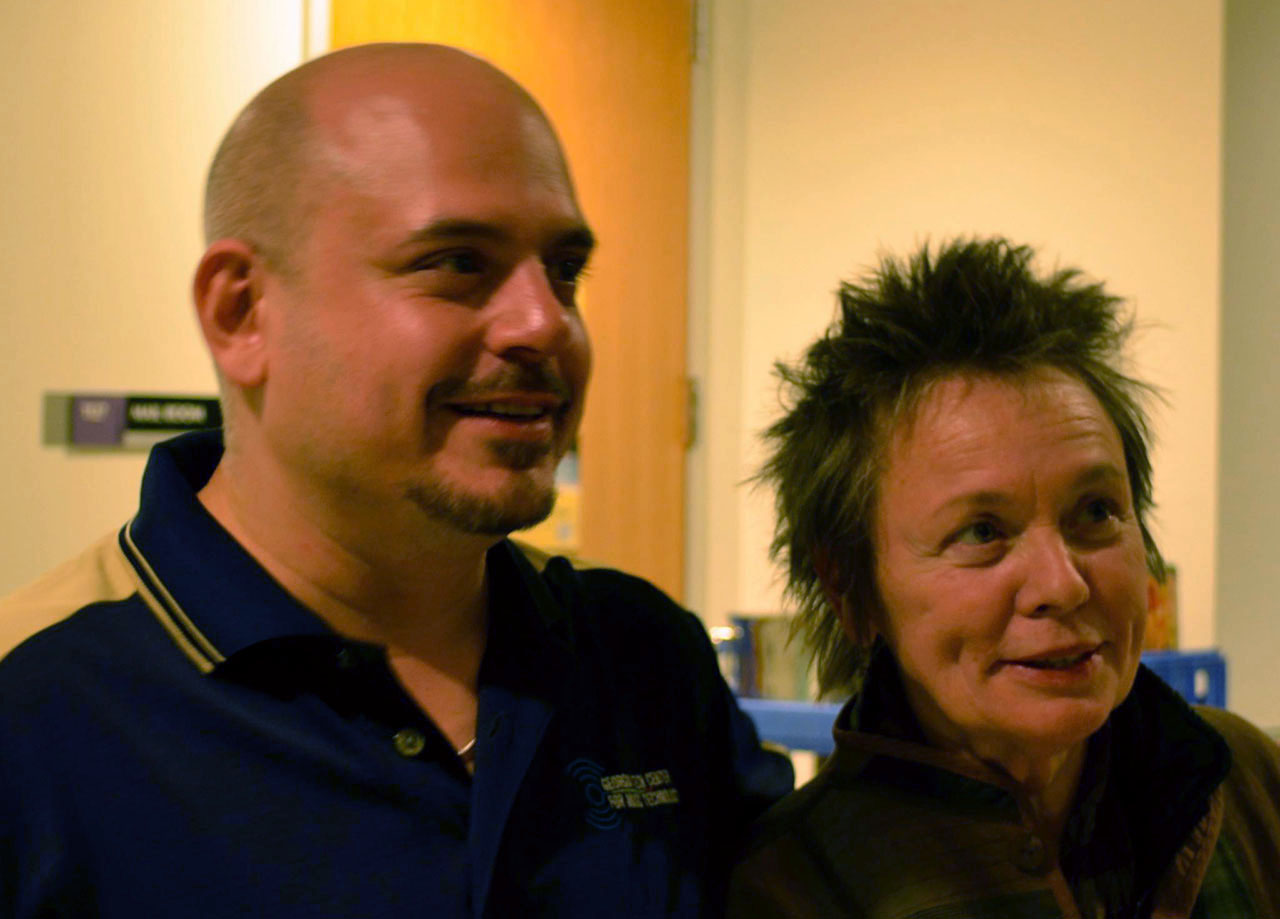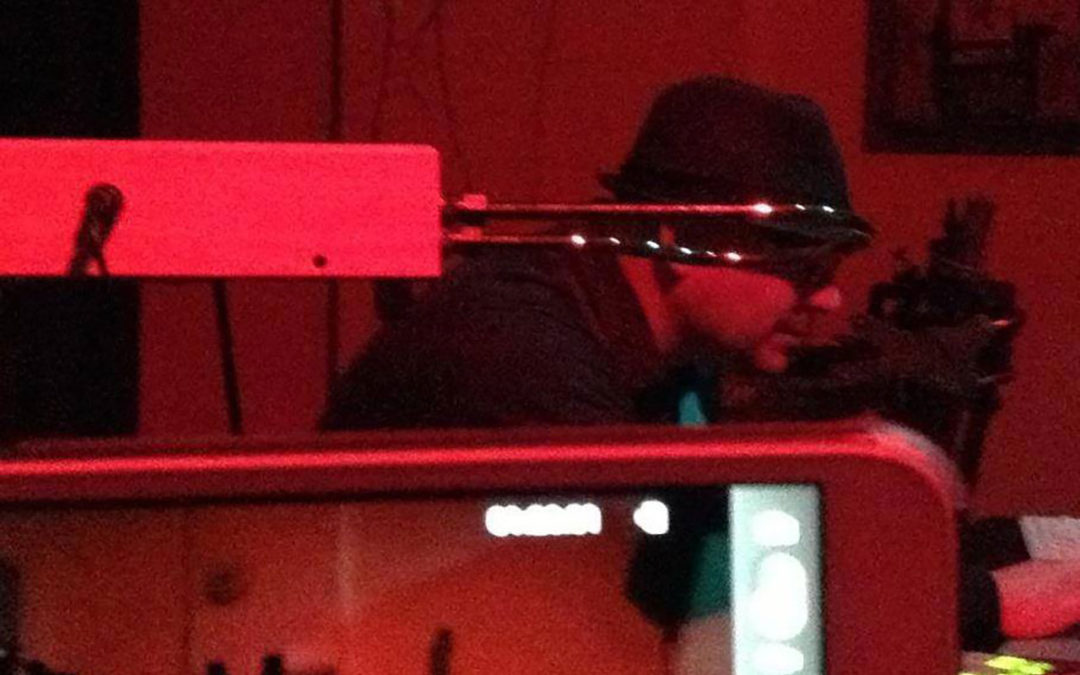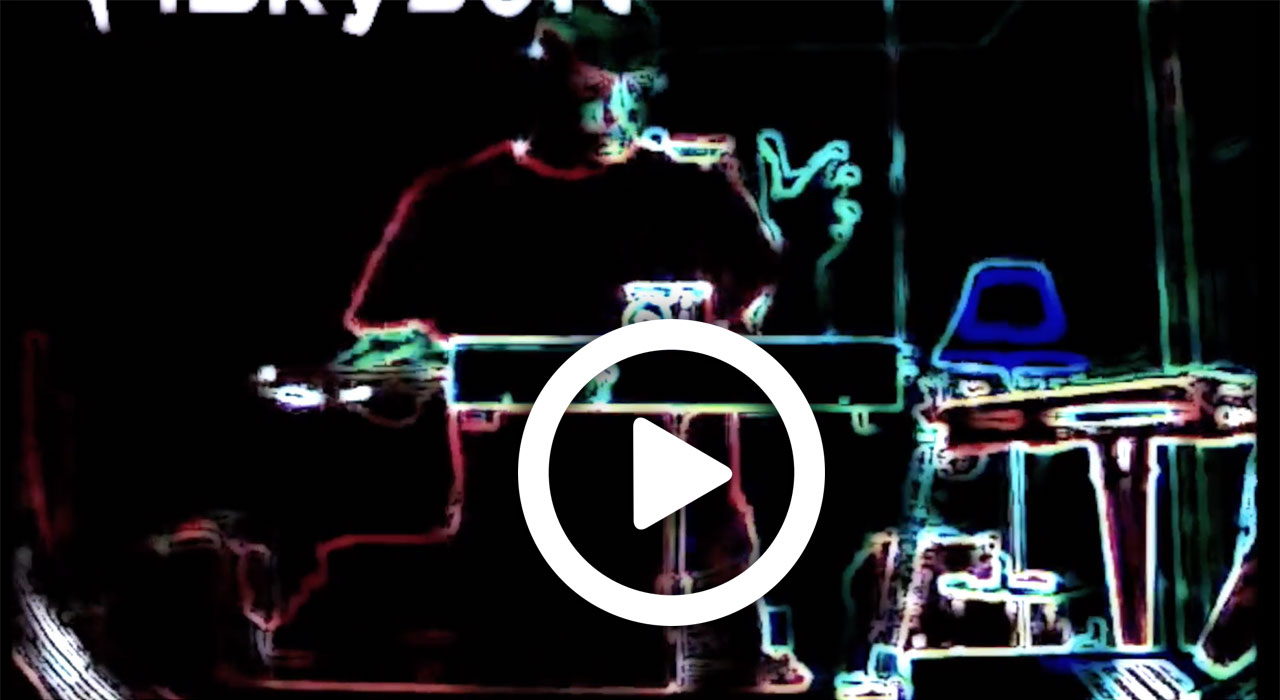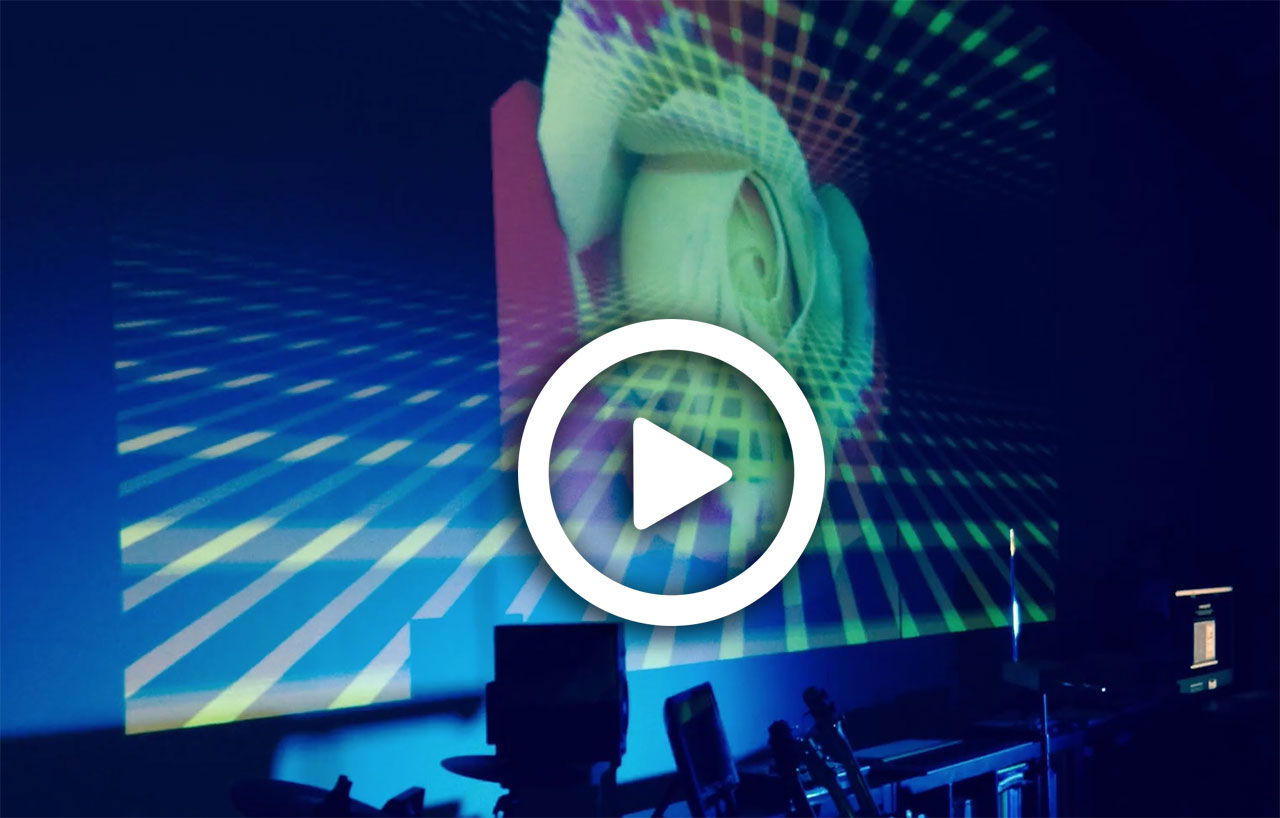Thom Jordan performing a live set at the 2013 Athens Slingshot Festival in Georgia.
Thom Jordan’s work is focused on the ongoing development and curation of unique computational methods (a.k.a. algorithms) for the generation and combination of music and motion graphics during live performance. His company is called Subobject Classifier. In category theory, a subobject classifier (Ω) is “a special object of a category such that the subobjects of any object X in the category correspond to the morphisms from X to Ω.” This allows one to create new combinations of content on the fly via the use of logic.
Thom is primarily interested in the blurring of distinctions between traditional composing and the improvising of music and visual art in real time, often simultaneously. Thom says, “My focus is towards applying the most useful algorithmic processes within the pursuit of three separate yet mutually reinforcing creative ends: (1) live performance (IRL and via the web); (2) creation of unique content for subsequent licensing, sharing, and supporting online DIY education; (3) app development for iOS, macOS and the web.”
Thom has worked as musician for many years, while teaching himself how to program in his spare time. He explains, “I eventually found the sweet spot between the two when I went back to college and started working toward a BS in Computer Science and Applied Math, which I completed in 2012 at SUNY Albany.” His senior project focused on developing evolutionary algorithms for the generation and deployment of musical patterns during live performance. In 2012, he began graduate-level research as part of the MS Music Technology program at Georgia Tech. Part of his work involved developing new and improved ways of applying these existing evolutionary algorithms during live musical performance, which culminated in three showcase performances at local music festivals in both Atlanta and Athens, Georgia.
Click on the image to see a short performance piece of Thom’s where he used a Theremin to create music out of thin air.
After landing in Tucson a year ago, Thom started looking for the ideal studio space. He saw the available studio at Launchpad Artspace, and according to Thom, “After visiting the space and getting a sense of the highly focused and committed artistic processes that unfold here daily, I knew immediately that I wanted to be a part of it. I ended up finding the space of my dreams along with a wonderful and inspiring community of like-minded folks who both live for their work and for helping others realize their innate potential.”
Thom is an invaluable co-collaborator at Launchpad Artspace. He recently programmed the first-ever digital version of leading creativity researcher Dr. Mark Runco’s divergent thinking assessment using 3D geometric shapes for The Universe Within world-building course. He says, “We created a unique app for the iPad that was both rewarding to make and fun to use. The interactive curriculum materials help elementary school students to learn about geometric relationships in a maximally-intuitive way that fosters creative thinking.”
Thom is eager to start filming content for the web, and soon after, regular live webcasts. He explains, “This unique situation and the magnificent space here allows me to work on my methods and materials in tandem with producing and performing, all from the same site, so that the artistic flow can unfold naturally and be the primary guide of each next step in the process.”
Click on the image to see a recent test video Thom shot showcasing his new space at Launchpad Artspace in Tucson, Arizona.

Thom Jordan with Laurie Anderson at the 2013 Guthman Musical Instrument Competition held at Georgia Tech in Atlanta. Laurie was one of the judges and Thom was the light tech for the main competition.
His most recent major breakthrough took place during Mat Bevel Company’s grand opening event in March. Thom performed his original music compositions throughout the evening as guests of all ages were dancing and getting into the music. Most notably, several seniors seemed very happy yet somewhat surprised to hear rhythmic electronic music which also incorporated a higher degree of harmonic complexity than the usual fare. Thom likens the music to the harmonic content of Miles Davis’ modal jazz period beginning with “The Birth of the Cool” and culminating in “Kind of Blue,” which he often refers to as an exceptional model of musical magic made possible through the improvisational exploration of musical scales and modes for color and contrast.
“The use of webcasting as a regular performance medium is a strategy that I’ve been interested in for a while now,” says Thom, “to help minimize the often arbitrary amount of down time between each performance. I’m eager to embark upon this next phase at Launchpad Artspace.”



A Well written article, with clear description of Thom’s work as a musician/composer/math and technology.
I have a better understanding of Thom’s work!